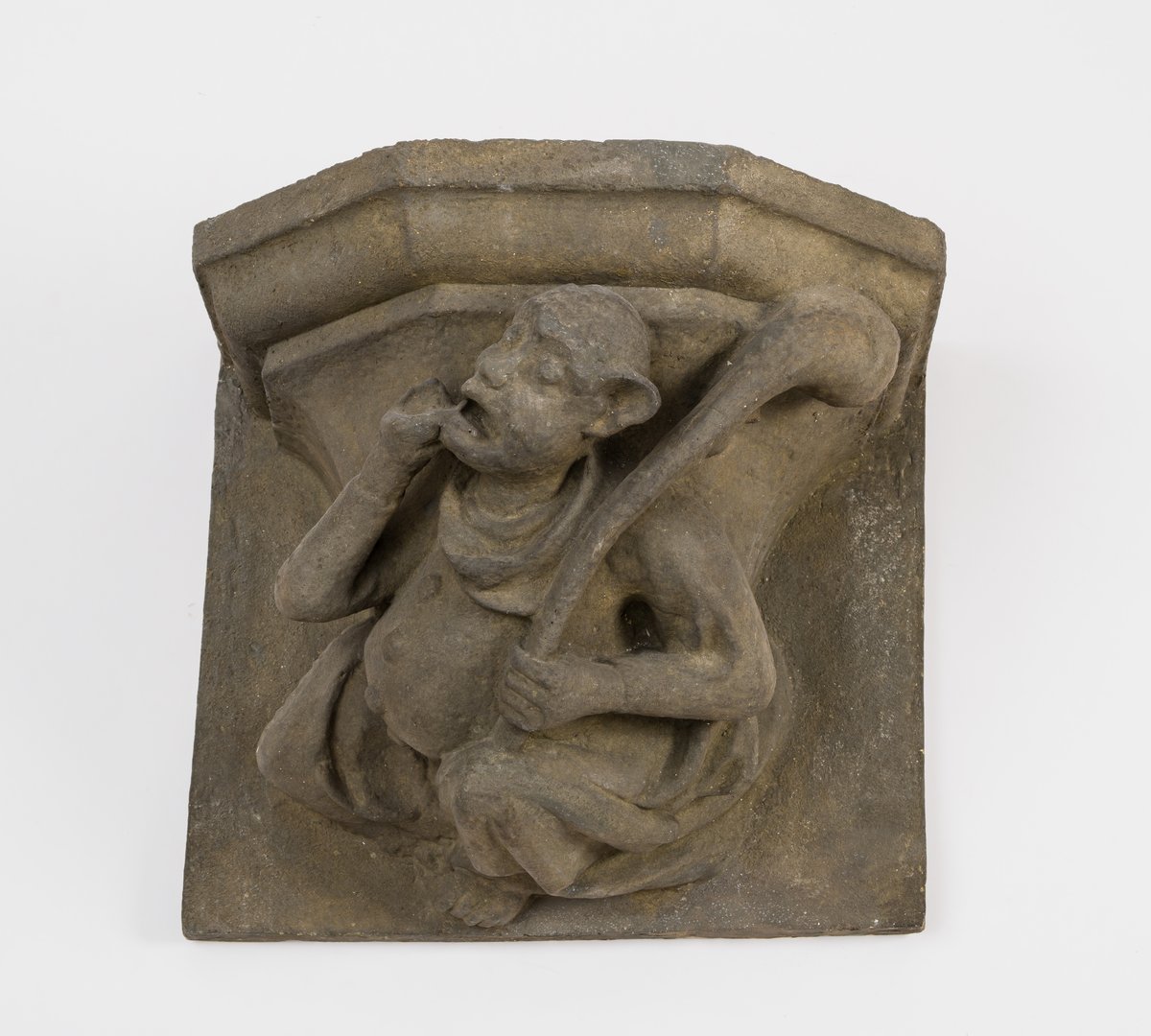
Figurated Corbel
Sculptures
| Artist | |
|---|---|
| Culture | Italian |
| Date | first quarter of the 18th century |
| Object type | relief |
| Medium, technique | terracotta |
| Dimensions | 34 × 30 × 6 cm, 2.2 kg |
| Inventory number | 69.14 |
| Collection | Sculptures |
| On view | Museum of Fine Arts, Second Floor, European Art 1700-1850, Gallery XXX |
Andrea Brustolon, born in the small town of Belluno in the Veneto region, spent his apprenticeship in Venice, in the workshop of Genoa’s great master Filippo Parodi. During his visit to Rome around 1680, he was influenced by Gian Lorenzo Bernini’s sculpture. Upon his return to Venice, he executed works primarily in wood and ivory: decorative furniture, objects of everyday use and sculptures, often embellished with figural carvings, for churches and the palazzos of private clients. When he returned to his native town in 1685 he began sculpting small-scale objects with religious themes for private devotion. Another, signed variant of his terracotta relief depicting The Fall of Phaeton can be found in a private collection. The story from Ovid’s Metamorphoses – Phaeton losing control of Apollo’s Sun Chariot and struck down by Jupiter’s thunderbolt – inspired many artists. The main parallel for Brustolon’s composition in painting is Sebastiano Ricci’s canvas from around 1703, now preserved in the Museo Civico in Belluno.
Balogh, Jolán – Szmodisné Eszláry, Éva, Katalog der ausländischen Bildwerke des Museums der bildenden Künste in Budapest, 4.-18. Jahrhundert, Bd. 3. Neuerwerbungen, Akadémiai Kiadó, Budapest, 1994, p. 37., no. 13.
This record is subject to revision due to ongoing research.